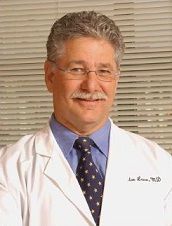Article
Orthopedic Surgeon Takes Creativity Outside the OR
Author(s):
Alan Lazar, MD, FACS, makes his living as a board-certified general orthopedic surgeon in Plantation, Fla. And while he specializes in procedures ranging from arthroscopic and reconstructive surgery to sports medicine, he prefers to talk about alternatives to surgery.

Alan Lazar, MD, FACS, makes his living as a board-certified general orthopedic surgeon in Plantation, Fla. And while he specializes in procedures ranging from arthroscopic and reconstructive surgery to sports medicine, he prefers to talk about alternatives to surgery. Specifically, platelet rich plasma therapy, or PRP.
PRP is blood plasma that has been enriched with platelets. As a concentrated source of autologous platelets, PRP contains several different growth factors and other cytokines that stimulate healing of bone and soft tissue.
The technique was created 30 years ago, but it only really got popular in surgeries for poor circulation or meniscal repairs about 10 years ago. So PRP is not new; it’s just the manner in which Lazar utilizes the therapy that is unique.
outside
without
What Lazar began doing was utilizing the therapy of surgery. He reasoned that if PRP was so successful at accelerating the healing process following surgery why not implement the procedure surgery?
“And lo and behold, it works,” he says. “But the typical surgeon doesn’t want to know that.”
Lazar, however, is not your typical surgeon.
Outside the box
Lazar refers to himself as creative and open-minded, yet admits to being frustrated most of his life for not being as creative as he wanted to be.
“I love photography,” he says. “And the reason I love photography is I’m not really talented artistically, but I can let loose on my creativity that way.”
That creative approach to orthopedic surgery has positioned Lazar as the expert medical consultant on Regenerative Injection Therapy for Appalachian State University in North Carolina. He not only brought PRP out of the operating room and into the office, he brought it to the attention of college and professional athletes, who are grateful to be able to heal their sports-related injuries in weeks rather than months. It’s an opportunity Lazar is thrilled to provide.
According to Lazar, injured young athletes respond well to treatment and are about 95% to 98% after. In a few weeks, they’re back to normal, he says.
“I’ve had some pitchers who tore ulnar collateral ligaments where they went to several doctors, and the other doctors said they absolutely needed the Tommy John procedure,” Lazar says. “And I’ve treated them with the platelets in one or two treatments, and they’re 100% without the surgery. And I’ve done that to some musicians who hurt themselves and can’t play their instruments. To be able to get people back playing, whether it’s sports or music, is very satisfying.”
How it works
Lazar says that the main reason PRP is so successful with college athletes is that they’re young, and our bodies tend to heal faster at a younger age. He explains that the way PRP works is by extracting stem cells to the area of the body that needs to be healed.
College athletes are ideal because, as opposed to older adults, they have a large amount of healthy stem cells. In Lazar’s treatment, the platelets stimulate the body so the injured area summons stem cells for healing.
“If you have a mild problem I use stem cells from a mini-liposuction, and if you have a severe problem where you need to grow cartilage in a joint, I’ll take stem cells from your bone marrow,” he explains. “So that’s where I’ve taken [PRP] to another level.”
That other level has resulted in his recently published book “Beyond the Knife” (iUniverse.com, July 2011). Lazar says he began writing the book about three years ago as a way of explaining to patients what PRP is, how it works and what they can expect from the procedure, because “there was no literature on this five years ago.”
Tremendous rewards
Dividing his time between south Florida and North Carolina is not problematic for Lazar. He and his wife have a second home in The Tar Heel State, and enjoy biking, golf, and taking long walks with their three dogs.
A lover of music who can’t sing, and an art fan who can’t draw, Lazar says those shortcomings are offset by his affection for photography.
“I can become a painter when I put a camera in my hands,” he says.
PRP, Lazar says, is yet another outlet for his creative side, and it also enables him to help other creative types.
“I had a female patient who couldn’t play her guitar after a fall,” Lazar says. “She went to several surgeons, and they said surgery was the only answer, but she didn’t want to have surgery. I treated her with a couple of injections, in multiple locations, over two treatments. She did totally fine, and went back to playing the guitar. She came back to me and wrote a song for me, and brought her guitar, and it was an amazing experience. She wound up on the local news, and it was really cool to be able to help her.”




